COVID-19: TCTMD’s Daily Dispatch for February Week 1
We’re curating a list of COVID-19 research and other useful content, and updating it daily.
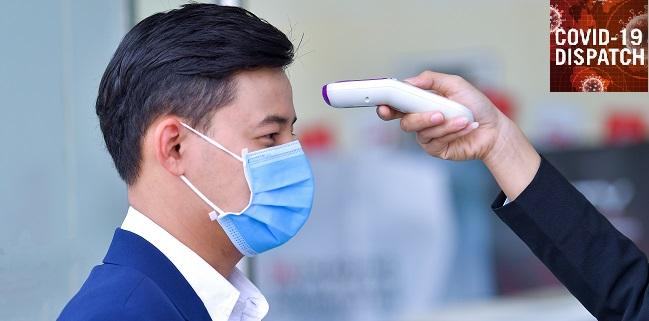
TCTMD reporter Todd Neale is keeping up on breaking news and peer-reviewed research related to COVID-19 and will update daily. If you have something to share, tell us. All of our COVID-19 coverage can be found on our COVID-19 Hub.
February 5, 2021
 Johnson & Johnson announced yesterday that it has applied for an emergency use authorization in the United States for its single-shot Janssen COVID-19 vaccine, a week after the company reported interim data from the phase III ENSEMBLE trial showing that the vaccine is 66% effective at preventing moderate-to-severe COVID-19. The US Food and Drug Administration (FDA) has scheduled an advisory committee meeting to discuss the vaccine for February 26. The vaccine would be the third, after those from Pfizer/BioNTech and Moderna, available to Americans if it is cleared for use.
Johnson & Johnson announced yesterday that it has applied for an emergency use authorization in the United States for its single-shot Janssen COVID-19 vaccine, a week after the company reported interim data from the phase III ENSEMBLE trial showing that the vaccine is 66% effective at preventing moderate-to-severe COVID-19. The US Food and Drug Administration (FDA) has scheduled an advisory committee meeting to discuss the vaccine for February 26. The vaccine would be the third, after those from Pfizer/BioNTech and Moderna, available to Americans if it is cleared for use.
Acting Commissioner of the FDA Janet Woodcock, MD, yesterday outlined what the agency is doing in response to emerging SARS-CoV-2 variants. Of note, Reuters reports, Woodcock said at a press briefing “that if new variants of the coronavirus emerge that require booster shots or changes to vaccines, the agency will not require the type of large trials that were required for emergency use authorization or approval.” Currently cleared vaccines appear protective against existing variants of concern, although efficacy against certain strains may be lower.
Antibody tests indicate that the number of COVID-19 cases in Tokyo may have spiked ninefold since last summer, according to a report from the Japanese health ministry. “Random testing on people in Japan’s capital in December showed that 0.91% had antibodies to the virus, compared with about 0.1% in a similar study in June,” Reuters reports. Increases were also seen in Osaka and Miyagi Prefecture. Japan recently decided to extend a state of emergency in and around Tokyo and Osaka until March 7.
In South Korea, which has not yet approved a COVID-19 vaccine for use, an advisory panel cleared the vaccine from AstraZeneca and the University of Oxford for people 18 and older, but urged caution for those older than 65, pointing to limited data in that age group, Reuters reports. AstraZeneca has applied for emergency approval in the country, with a decision expected soon. The company also applied for approval in Japan.
A Korean study in Arteriosclerosis, Thrombosis, and Vascular Biology shows that among patients hospitalized with COVID-19 early on in the pandemic, statin use was associated with a lower mortality risk, similar to what has been seen in hospitalized patients with pneumonia. That’s also consistent with other research that has come out during the pandemic.
 A small, 72-patient trial shows that colchicine reduced the length of supplemental oxygen therapy and hospitalization in patients with moderate-to-severe COVID-19, according to results published in RMD Open. Two patients, both in the placebo group, died. The findings follow the results of the much larger COLCORONA trial, reported last month, suggesting a benefit of colchicine in nonhospitalized patients.
A small, 72-patient trial shows that colchicine reduced the length of supplemental oxygen therapy and hospitalization in patients with moderate-to-severe COVID-19, according to results published in RMD Open. Two patients, both in the placebo group, died. The findings follow the results of the much larger COLCORONA trial, reported last month, suggesting a benefit of colchicine in nonhospitalized patients.
An exclusive story from the Guardian shows that Native Americans are dying from COVID-19 at about twice the rate seen in white Americans. One in every 475 American Indians or Alaskan Natives have died since the start of the pandemic, compared with one in every 645 Black individuals and 825 white individuals. “The true death toll is undoubtedly significantly higher as multiple states and cities provide patchy or no data on Native Americans lost to COVID. Of those that do, communities in Mississippi, New Mexico, Arizona, Montana, Wyoming, and the Dakotas have been the hardest hit.”
An analysis of more than 27,000 patients, published in Stroke, indicates that acute ischemic stroke occurs infrequently in patients with COVID-19 (1.3%) but is associated with a greater risk of dying or being discharged somewhere other than home. Among patients with COVID-19, rates of hypertension, diabetes, hyperlipidemia, atrial fibrillation, and congestive heart failure were higher in those with acute ischemic stroke.
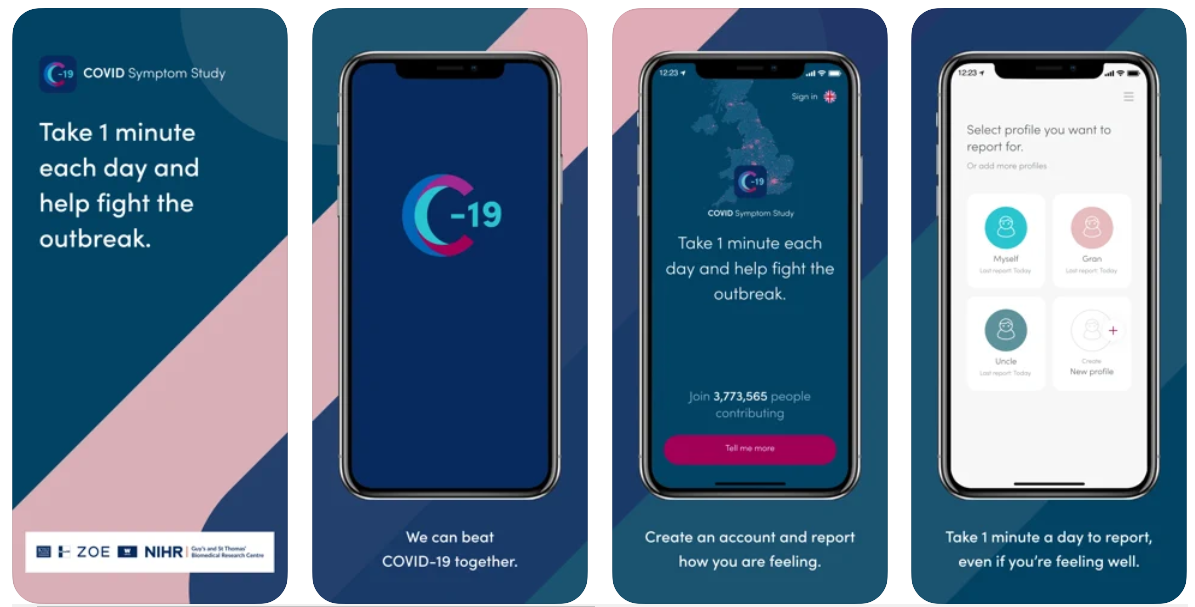
Multiple studies in Morbidity and Mortality Weekly Report provide insights into the impact of the pandemic. They show that testing of blood lead levels in children has declined; there are racial/ethnic disparities in mental health conditions and substance use during the pandemic among adults; and people who are lesbian, gay, or bisexual have higher rates of health conditions associated with severe COVID-19, such as hypertension, stroke, and heart disease, compared with their heterosexual counterparts.
The most cost-effective way to control the spread of SARS-CoV-2 in areas of the United States with high levels of transmission is a combination of weekly testing and a 2-week isolation period after a positive test, a modeling study in the Lancet Public Health indicates. When the level of transmission is lower, monthly testing plus 1 week of isolation appears to be the most cost-effective option.
 As the COVID-19 pandemic continues unabated, scientists are pondering what to make of a very quiet flu season. According to a story in the Atlantic, there were close to 100 times as many flu cases identified last year compared with this year in the United States, with about the same number of tests performed. “This winter has, so far, been the quietest flu season in recent memory, and the perks are clear. Fewer flu cases mean fewer deaths, fewer occupied hospital beds, and fewer overtaxed healthcare workers, caregivers, and laboratory employees—a welcome respite for a country still in the coronavirus’s grip,” Katherine Wu writes. “But the flu’s absence is also unsettling. Without flu cases to study, researchers have been starved of data crucial for developing vaccines and forecasting the next outbreak. Flu viruses haven’t gone extinct. They’re temporarily in hiding. And no one’s quite sure when, or how, they will return.”
As the COVID-19 pandemic continues unabated, scientists are pondering what to make of a very quiet flu season. According to a story in the Atlantic, there were close to 100 times as many flu cases identified last year compared with this year in the United States, with about the same number of tests performed. “This winter has, so far, been the quietest flu season in recent memory, and the perks are clear. Fewer flu cases mean fewer deaths, fewer occupied hospital beds, and fewer overtaxed healthcare workers, caregivers, and laboratory employees—a welcome respite for a country still in the coronavirus’s grip,” Katherine Wu writes. “But the flu’s absence is also unsettling. Without flu cases to study, researchers have been starved of data crucial for developing vaccines and forecasting the next outbreak. Flu viruses haven’t gone extinct. They’re temporarily in hiding. And no one’s quite sure when, or how, they will return.”
February 4, 2021
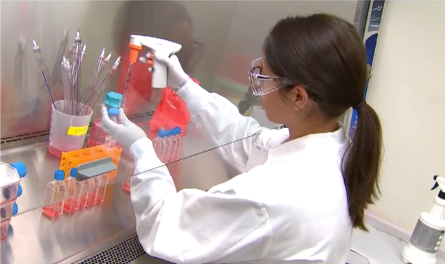
The European Medicines Agency (EMA) announced yesterday that it has started a rolling review of Novavax’s COVID-19 vaccine. Last week, in a press release, the company said its vaccine was 89.3% effective against mild, moderate, or severe COVID-19 in a UK trial conducted while a more-infectious variant was circulating, although efficacy was lower (49.4%) in a South African study.
A paper published as a preprint earlier this week generated excitement as it suggests that the COVID-19 vaccine from AstraZeneca and the University of Oxford not only prevents people from getting sick but also might reduce transmission of the virus. That conclusion, however, gets ahead of the data, as STAT’s Matthew Herper and Helen Branswell write. “The study showed a decrease in [viral] shedding, not ‘transmission,’” said one expert. “The bottom line is, no, one cannot draw a conclusion or straight line.”
An Associated Press story delves into how the United States is playing catch-up when it comes to detecting SARS-CoV-2 variants: “The problem has not been a shortage of technology or expertise. Rather, scientists say, it’s an absence of national leadership and coordination, plus a lack of funding and supplies for overburdened laboratories trying to juggle diagnostic testing with the hunt for genetic changes.”
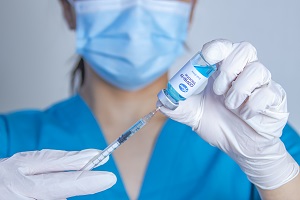 In a JAMA Patient Page, Edward Livingston, MD, the journal’s deputy editor, argues that two doses of the vaccines from Pfizer/BioNTech and Moderna are needed to provide adequate protection. “The new vaccines . . . are highly effective, but controversy exists about whether a second dose should be delayed in order to immunize more people. The second dose is necessary and should be given,” he says.
In a JAMA Patient Page, Edward Livingston, MD, the journal’s deputy editor, argues that two doses of the vaccines from Pfizer/BioNTech and Moderna are needed to provide adequate protection. “The new vaccines . . . are highly effective, but controversy exists about whether a second dose should be delayed in order to immunize more people. The second dose is necessary and should be given,” he says.
People living with versus without HIV have higher risks of being hospitalized with and dying from COVID-19, according to a study of New York State residents in JAMA Network Open. The researchers suggest HIV-positive people “may warrant recategorization from ‘might be at increased risk’ to ‘increased risk’ in the [CDC’s] underlying medical conditions list.”
Highlighting fears about the mental health impact of COVID-19-related restrictions, another study in JAMA Network Open shows that suicide rates increased in Japan between April and November 2020 compared with previous years, particularly among men younger than 30 and women younger than 50.
 As seen with other procedures, US cardiac surgery volumes fell early on during the pandemic, and that was associated with a rise in deaths, according to research presented during the virtual Society of Thoracic Surgeons (STS) meeting. Volumes eventually returned to close to normal, but not higher, which indicates that “somewhere out there in the United States there are people who probably should have been operated on and they never were,” a researcher told TCTMD’s Yael Maxwell.
As seen with other procedures, US cardiac surgery volumes fell early on during the pandemic, and that was associated with a rise in deaths, according to research presented during the virtual Society of Thoracic Surgeons (STS) meeting. Volumes eventually returned to close to normal, but not higher, which indicates that “somewhere out there in the United States there are people who probably should have been operated on and they never were,” a researcher told TCTMD’s Yael Maxwell.
“At the very least, COVID-19 might be classified as ‘social murder,’” Kamran Abbasi, executive editor of the BMJ, argues. “Politicians must be held to account by legal and electoral means, indeed by any national and international constitutional means necessary. State failures that led us to 2 million deaths are ‘actions’ and ‘inactions’ that should shame us all.” Also demanding accountability is Clare Wenham, PhD, in a second editorial: “We need to make sure that accountability is not just focused on China but on the many states that delayed their preparedness and response efforts. . . . We need a targeted review that names and shames governments, rather than obscuring them with generalizations.”
Measures taken to prevent the spread of SARS-CoV-2 have also helped to reduce other respiratory infections, and that includes the enterovirus EV-D68, which is believed to be the main driver of a rare polio-like syndrome in children called acute flaccid myelitis. As STAT reports, 2020 saw just 30 confirmed cases of the condition, according to CDC data, compared with 238 in 2018 and 153 in 2016.
 Consistent with its advice around other events that, in normal times, typically prompt social gatherings, the US Centers for Disease Control and Prevention (CDC) is recommending virtual Super Bowl parties and gathering only with people in one’s own household this Sunday. CDC Director Rochelle Walensky reiterated that suggestion at a White House briefing on Wednesday, CNBC reports. “We must take prevention and intervention seriously,” she said.
Consistent with its advice around other events that, in normal times, typically prompt social gatherings, the US Centers for Disease Control and Prevention (CDC) is recommending virtual Super Bowl parties and gathering only with people in one’s own household this Sunday. CDC Director Rochelle Walensky reiterated that suggestion at a White House briefing on Wednesday, CNBC reports. “We must take prevention and intervention seriously,” she said.
February 3, 2021
The JAMA Network is hosting a live Q&A with Anthony S. Fauci, MD, at 3:30 PM ET today to discuss shifts in the US pandemic response under the new Biden administration.
 In an effort to ease the debate over the safety of reopening schools and in-person teaching, nearly half of US states have started vaccinating teachers, the New York Times reports. The numbers come on the heels of the Centers for Disease Control and Prevention’s strong messaging last week that children should return to classes, with some qualifications.
In an effort to ease the debate over the safety of reopening schools and in-person teaching, nearly half of US states have started vaccinating teachers, the New York Times reports. The numbers come on the heels of the Centers for Disease Control and Prevention’s strong messaging last week that children should return to classes, with some qualifications.
STAT has updated its head-to-head vaccine comparison to include the not-yet-approved Johnson & Johnson product alongside the vaccines from Pfizer/BioNTech and Moderna, with the caveat that the J&J data have not yet been published in full. The information compares mechanism of action, dosage(s), scheduling, efficacy, target population, and documented side effects. “Please note that in the initial rollout of vaccine, individuals are unlikely to be offered a choice of which vaccine they want,” Helen Branswell writes. “Supplies are too scarce. The vaccine available at the place where you are being vaccinated is the one you’ll get.”
Health authorities in Britain are investigating homegrown cases of the E484K mutation—first seen in the B.1.351 “South African” variant—in B.1.1.7, the “Kent” variant, the BBC reported yesterday. Julian Tang, MD, “a virus expert at the University of Leicester, described the finding as ‘a worrying development, though not entirely unexpected,’” their story notes.
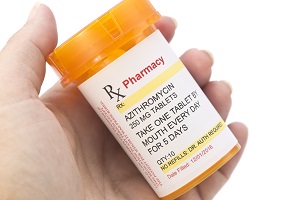 Full results from the azithromycin arm of the RECOVERY trial have now been published in the Lancet; top-line results, showing no benefit, were released by the trialists back in December. Among 7,763 hospitalized patients with confirmed COVID-19 included in the azithromycin analysis, those randomized to receive the antibiotic were no more likely to survive than patients who received a placebo. Other prespecified outcomes were also no different between groups. “Azithromycin use in patients admitted to hospital with COVID-19 should be restricted to patients in whom there is a clear antimicrobial indication,” RECOVERY investigators conclude.
Full results from the azithromycin arm of the RECOVERY trial have now been published in the Lancet; top-line results, showing no benefit, were released by the trialists back in December. Among 7,763 hospitalized patients with confirmed COVID-19 included in the azithromycin analysis, those randomized to receive the antibiotic were no more likely to survive than patients who received a placebo. Other prespecified outcomes were also no different between groups. “Azithromycin use in patients admitted to hospital with COVID-19 should be restricted to patients in whom there is a clear antimicrobial indication,” RECOVERY investigators conclude.
Machine learning, based on a data set containing 50 socioeconomic and health-related factors at the county level, indicates that residential racial segregation influences COVID-19 infection and mortality. Counties with higher levels of segregation also had higher rates of infection and more deaths as compared with counties that had average racial segregation. Black residents have higher mortality rates than whites, the analysis in PNAS confirmed.
A longitudinal, multicenter, transthoracic echocardiography (TTE) study of 36 hospitalized COVID-19 patients showed that most saw their acute abnormalities in ventricular size or function resolve over 3 months. Nearly one-third, however, had persistent evidence of adverse ventricular remodeling. “Repeat TTE appears necessary for surveillance because a significant proportion in whom biomarkers normalized continued to demonstrate ventricular abnormalities,” William E. Moody, MD, and colleagues write in the Journal of the American Society of Echocardiography.
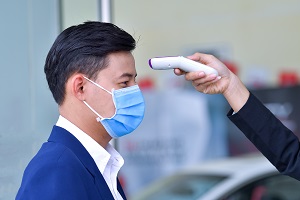 Of the more than 19 million international travelers entering China between April 16 and October 12, 2020, 3,103 tested positive for SARS-CoV-2. Only 43.6%, however, were symptomatic at entry, 4.4% developed symptoms within the first few days, and nearly 52% never developed symptoms. “The finding of a high and increasing proportion of asymptomatic infections among all SARS-CoV-2–positive international entrants to China may signal an increase in asymptomatic infection globally,” the authors conclude. Efforts to screen out symptomatic people from travelling did not appear to impact the proportion who showed up at Chinese entry points and tested positive, the authors write in JAMA.
Of the more than 19 million international travelers entering China between April 16 and October 12, 2020, 3,103 tested positive for SARS-CoV-2. Only 43.6%, however, were symptomatic at entry, 4.4% developed symptoms within the first few days, and nearly 52% never developed symptoms. “The finding of a high and increasing proportion of asymptomatic infections among all SARS-CoV-2–positive international entrants to China may signal an increase in asymptomatic infection globally,” the authors conclude. Efforts to screen out symptomatic people from travelling did not appear to impact the proportion who showed up at Chinese entry points and tested positive, the authors write in JAMA.
Auto-antibodies may play a role in the abnormal clotting seen in COVID-19. Tracy Hampton, PhD, writing in a news article in JAMA, offers an explainer on research first published in Science Translational Medicine, pointing out that previous studies have also drawn parallels between coagulation abnormalities in COVID-19 and antiphospholipid syndrome. The findings have implications for new potential treatments, like plasmapheresis, but also raise the possibility that treatments like convalescent plasma, for instance, could inadvertently transmit a risk of clotting.
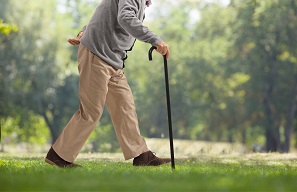 Sir Tom Moore, the 100-year-old World War II army captain who set out last April to raise £1,000 to help the UK’s National Health Service staff fight COVID-19 by walking laps around his garden—and ended up raising more than £33 million—has died of COVID-19. Moore was knighted by the Queen on his 100th birthday last July. A “national clap” was held throughout Britain this evening, local time.
Sir Tom Moore, the 100-year-old World War II army captain who set out last April to raise £1,000 to help the UK’s National Health Service staff fight COVID-19 by walking laps around his garden—and ended up raising more than £33 million—has died of COVID-19. Moore was knighted by the Queen on his 100th birthday last July. A “national clap” was held throughout Britain this evening, local time.
Shelley Wood contributed today’s Dispatch.
February 2, 2021
Russia’s Sputnik V vaccine, the first COVID-19 vaccine to be licensed anywhere in the world back in August, is 91.6% effective, according to interim phase III results published in the Lancet. The most common adverse events were flu-like illness, injection-site reactions, headache, and asthenia. Some experts had expressed concern about how fast the vaccine was developed and brought to market, but these results appear to provide some reassurance.
 January was the deadliest month of the pandemic for the United States, with more than 95,000 lives lost, but it ended with case numbers and hospitalizations falling and vaccinations ramping up, the Associated Press reports. Also, on Monday, the number of Americans hospitalized with COVID-19 dropped below 100,000 for the first time in 2 months. Tempering the positive news, however, is uncertainty over whether the situation will worsen again as more-infectious variants of the virus spread around the world.
January was the deadliest month of the pandemic for the United States, with more than 95,000 lives lost, but it ended with case numbers and hospitalizations falling and vaccinations ramping up, the Associated Press reports. Also, on Monday, the number of Americans hospitalized with COVID-19 dropped below 100,000 for the first time in 2 months. Tempering the positive news, however, is uncertainty over whether the situation will worsen again as more-infectious variants of the virus spread around the world.
Though daily COVID-19 numbers have started declining, Japan is set to extend a state of emergency in Tokyo and elsewhere for another month, Reuters reports. “The number of new coronavirus cases is falling, but caution is still needed,” a government official told reporters. Japan has recorded about 394,000 COVID-19 cases and nearly 6,000 deaths during the pandemic, yielding a rate of 4.61 deaths per 100,000 according to the Johns Hopkins COVID-19 Dashboard. That’s far lower than the rate of 160.59 for the United Kingdom and 135.47 for the US.
The European economy looks like it’ll take longer to recover from pandemic-related woes compared with other regions, with the Associated Press reporting that “the 19 countries that use the Euro are forecast to lag China and the US in bouncing back from the worst of the pandemic.” For the entirety of 2020, the eurozone shrank by 6.8%.
 As of October 2020, the only age groups sustaining resurgences of SARS-CoV-2 transmission in the United States were adults ages 20 to 49, according to a study in Science. Researchers estimated that 65 of 100 COVID-19 infections originated in these age groups, concluding that focusing interventions on this population “is an important consideration in halting resurgent epidemics and preventing COVID-19-attributable deaths.”
As of October 2020, the only age groups sustaining resurgences of SARS-CoV-2 transmission in the United States were adults ages 20 to 49, according to a study in Science. Researchers estimated that 65 of 100 COVID-19 infections originated in these age groups, concluding that focusing interventions on this population “is an important consideration in halting resurgent epidemics and preventing COVID-19-attributable deaths.”
In a study of adults hospitalized with COVID-19 at a tertiary care center, published in the American Journal of Cardiology, the following factors were associated with in-hospital mortality: older age, prior ventricular arrhythmia, use of P2Y12 inhibitors, higher C-reactive protein, lower albumin, and higher troponin T. Factors associated with MACE were higher respiratory rates, altered mental status, and laboratory abnormalities like higher troponin T.
Two papers in Morbidity and Mortality Weekly Report provide some insights into which Americans have been getting vaccinated against COVID-19 in the early going. One shows that during the first month of the national vaccination program, about 13 million people received at least one dose; most were women (63.0%), 50 or older (55.0%), and non-Hispanic white (60.4%). The other assesses first-dose vaccination coverage among residents and staff at long-term skilled nursing facilities participating in the Pharmacy Partnership for Long-Term Care Program: a median of 77.8% of residents and just 37.5% of staff received at least one dose. “Barriers to . . . staff member vaccination need to be overcome with continued development and implementation of focused communication and outreach strategies to improve vaccination coverage,” the authors say.
 An observational study in JAMA shows that use of IV immunoglobulins plus methylprednisolone is associated with a more-favorable fever outcome compared with IV immunoglobulins alone in patients with multisystem inflammatory syndrome in children (MIS-C) associated with SARS-CoV-2 infection. The rate of treatment failure was only 9% in patients treated with the combination, much lower than the 51% rate seen in the other group.
An observational study in JAMA shows that use of IV immunoglobulins plus methylprednisolone is associated with a more-favorable fever outcome compared with IV immunoglobulins alone in patients with multisystem inflammatory syndrome in children (MIS-C) associated with SARS-CoV-2 infection. The rate of treatment failure was only 9% in patients treated with the combination, much lower than the 51% rate seen in the other group.
The European Medicines Agency (EMA) has started a rolling review of Regeneron’s combination antibody treatment (casirivimab/imdevimab). The US Food and Drug Administration (FDA) issued an emergency use authorization back in November for the cocktail, which was shown to reduce COVID-19-related hospitalization or emergency room visits in patients at high risk for disease progression within 28 days of treatment.
February 1, 2021
An order issued late last week by the US Centers for Disease Control and Prevention (CDC) will require masks to be worn by all people traveling on public transportation, including airplanes, ships, ferries, trains, subways, buses, taxis, and ride-shares. “CDC recommends that nonessential travel be avoided; however, for those who must travel, additional measures are being put in place to help prevent the spread of the virus,” CDC Director Rochelle Walensky, MD, said. “Masks are most likely to reduce the spread of COVID-19 when they are widely and consistently used by all people in public settings.”
 Canada has beefed up its travel restrictions, implementing mandatory hotel quarantine for arriving travelers and suspending airline service to Mexico and all Caribbean destinations through the end of April, PBS reports. The government will also require PCR testing at the airport for people returning to Canada. “Travelers will then have to wait for up to 3 days at an approved hotel for their test results, at their own expense, which is expected to be more than $2,000,” Prime Minister Justin Trudeau said.
Canada has beefed up its travel restrictions, implementing mandatory hotel quarantine for arriving travelers and suspending airline service to Mexico and all Caribbean destinations through the end of April, PBS reports. The government will also require PCR testing at the airport for people returning to Canada. “Travelers will then have to wait for up to 3 days at an approved hotel for their test results, at their own expense, which is expected to be more than $2,000,” Prime Minister Justin Trudeau said.
After top-line results showing the benefits of full-dose anticoagulation in moderately ill patients hospitalized with COVID-19 were released last week, investigators from the ATTACC, ACTIV-4, and REMAP-CAP clinical trial platforms released a slide set containing fuller results of the interim analysis, with the following caveat: “Results are pre-publication, not from locked databases, and not peer-reviewed.” In moderate patients, anticoagulation given at a therapeutic versus prophylactic dose lowered mortality (5.7% vs 7.7%), at the cost of more major bleeding (1.6% vs 0.9%).
The countries doing best at getting their residents vaccinated against SARS-CoV-2 are Israel and the United Arab Emirates, which have immunized 54.7 and 33.7 people per 100, respectively, as of the end of January, according to Our World in Data. The next highest rates were seen in the UK (13.9), Bahrain (10.0), and the United States (9.4).
On Friday, Hungary became the first European country to approve China’s Sinopharm COVID-19 vaccine on an emergency basis, the Associated Press reports. A day prior, the Hungarian government said any vaccine that had been administered to at least 1 million people worldwide could be approved for use in the country without undergoing an assessment by its drug regulator.
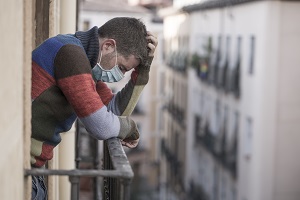 With case numbers waning in Italy, COVID-19 restrictions in much of the country eased on Monday, allowing the return of some normal activities, Reuters reports. “After severe curbs over the Christmas and New Year period, two-thirds of Italy was declared a ‘yellow zone’ allowing bars in those less risky areas to serve customers at counters and tables again instead of offering only takeaway in plastic cups.”
With case numbers waning in Italy, COVID-19 restrictions in much of the country eased on Monday, allowing the return of some normal activities, Reuters reports. “After severe curbs over the Christmas and New Year period, two-thirds of Italy was declared a ‘yellow zone’ allowing bars in those less risky areas to serve customers at counters and tables again instead of offering only takeaway in plastic cups.”
In more-concerning news out of Europe, the SARS-CoV-2 variant first identified in South Africa has been found in the United Kingdom among 11 people with no travel exposure who live in different regions. Mass “surge testing” is taking place among residents of those areas, regardless of whether they are showing symptoms, to try to contain spread, Reuters reports.
Epidemiologist Michael Osterholm, PhD, who served on President Joe Biden’s COVID-19 advisory board during the transition, warned the US is likely to see a surge stemming from the UK variant in the next 6 to 14 weeks and urged the government to speed up the vaccine rollout to mitigate the impact, The Guardian reports.
A large Spanish study of patients visiting emergency departments shows that the risk of pulmonary embolism “clearly increased” in patients with COVID-19, whereas links to risks of other conditions, including ACS, deep venous thrombosis, stroke, and upper GI bleeding, were not as strong. The findings were published in the International Journal of Cardiology.
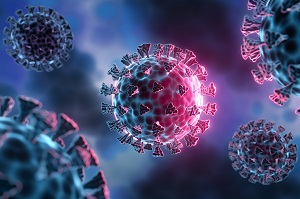 Scientific American has a guide to the most-concerning mutations seen in five SARS-CoV-2 variants first identified in Spain, the UK, and South Africa, as well as two in Brazil. “Although the seemingly sudden emergence of several spike protein variants is reason for concern, researchers say there is no evidence that the virus has changed in a fundamental way that lets it mutate more rapidly. What is most likely, [one expert] says, is that the sheer number of COVID cases worldwide is allowing the virus numerous opportunities to change a little bit.”
Scientific American has a guide to the most-concerning mutations seen in five SARS-CoV-2 variants first identified in Spain, the UK, and South Africa, as well as two in Brazil. “Although the seemingly sudden emergence of several spike protein variants is reason for concern, researchers say there is no evidence that the virus has changed in a fundamental way that lets it mutate more rapidly. What is most likely, [one expert] says, is that the sheer number of COVID cases worldwide is allowing the virus numerous opportunities to change a little bit.”
Todd Neale is the Associate News Editor for TCTMD and a Senior Medical Journalist. He got his start in journalism at …
Read Full Bio

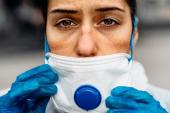

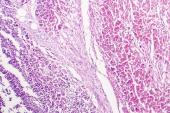
Comments